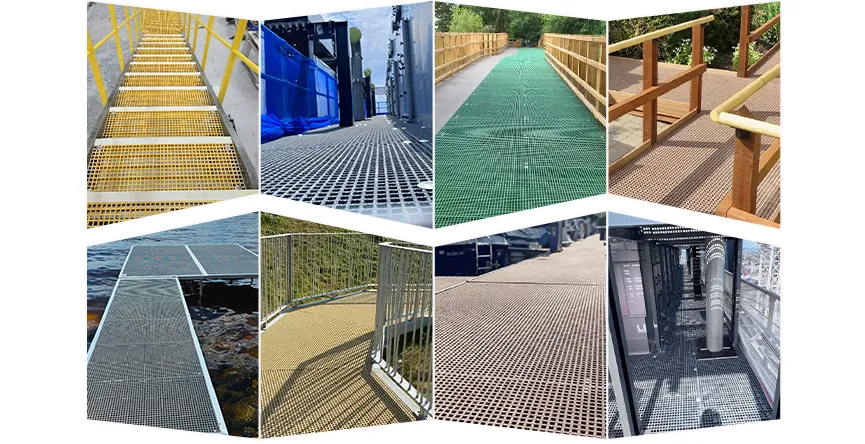loading...
- No. 9, Xingyuan South Street, Dongwaihuan Road, Zaoqiang County, Hengshui, Hebei, China
- admin@zjcomposites.com
- +86 15097380338
- Welcome to visit our website!
Design and Management of GRP Water Storage Tanks for Efficient Resource Utilization
The Importance of GRP Water Storage Tanks in Modern Water Management
In today's world, effective water management is more crucial than ever. With increasing urbanization, industrialization, and changing climate conditions, the need for reliable water storage solutions has grown significantly. One solution that has gained prominence is the use of Glass Reinforced Plastic (GRP) water storage tanks. These tanks are becoming increasingly popular due to their unique properties and advantages over traditional materials.
What are GRP Water Storage Tanks?
GRP water storage tanks are constructed from a composite material that combines glass fibers with resin. This composition results in a lightweight, durable, and corrosion-resistant structure that is ideal for storing water. GRP tanks can be produced in various sizes and shapes, making them versatile for numerous applications, from residential to industrial needs.
Advantages of GRP Tanks
1. Durability One of the most significant advantages of GRP tanks is their durability. Unlike traditional materials like concrete or steel, GRP does not corrode or rust. This ensures a longer lifespan and reduced maintenance costs, making them a cost-effective solution over time.
2. Lightweight GRP tanks are considerably lighter than their concrete or steel counterparts, which simplifies transportation and installation. The reduced weight allows for easier handling and can lower construction costs, especially in areas where heavy lifting equipment is not readily available.
3. Corrosion Resistance GRP is inherently resistant to chemicals and environmental factors, which makes it an ideal choice for storing water. This resistance prevents contamination and ensures that the water remains safe for consumption or use in industrial processes.
4. Versatility GRP tanks can be manufactured in a variety of shapes and sizes, allowing for customization to meet specific storage requirements. Whether for residential use, agricultural irrigation, or industrial applications, GRP tanks can be adapted to fit various needs.
grp water storage tanks

5. Cost-Effectiveness The longevity and low maintenance of GRP tanks contribute to their cost-effectiveness. Although the initial investment may be higher than traditional tanks, the long-term savings in maintenance and replacement costs typically outweigh the initial expenditure.
Environmental Considerations
In an era of increasing environmental awareness, GRP tanks present an eco-friendly option for water storage. The manufacturing process of GRP is continuously being improved to minimize environmental impact, and the long lifespan of these tanks reduces the frequency of replacements, which in turn lowers material waste. Furthermore, GRP can be recycled at the end of its life cycle, aligning with sustainable practices.
Applications of GRP Water Storage Tanks
GRP water storage tanks are utilized in various sectors, including
- Residential Homeowners often choose GRP tanks for their rainwater harvesting systems, providing a sustainable water source for gardening and other non-potable uses. - Agriculture GRP tanks are used in agricultural settings for irrigation and livestock watering, ensuring a consistent water supply for crops and animals. - Industrial In industries where large volumes of water are necessary, GRP tanks serve as essential components in cooling systems, process water storage, and more.
- Healthcare Hospitals and clinics utilize GRP tanks for storing purified water, vital for operations and patient care.
Conclusion
GRP water storage tanks have emerged as a reliable solution for modern water management challenges. Their durability, lightweight nature, and resistance to corrosion make them a preferred choice across various sectors. As the demand for efficient and sustainable water storage solutions continues to rise, GRP tanks are likely to play an increasingly important role in meeting those needs. Investing in GRP technology not only supports effective water management but also contributes to a more sustainable future, making it a wise choice for many applications.
-
The Rise of FRP Profiles: Strong, Lightweight, and Built to LastNewsJul.14,2025
-
SMC Panel Tanks: A Modern Water Storage Solution for All EnvironmentsNewsJul.14,2025
-
GRP Grating: A Modern Solution for Safe and Durable Access SystemsNewsJul.14,2025
-
Galvanized Steel Water Tanks: Durable, Reliable, and Ready for UseNewsJul.14,2025
-
FRP Mini Mesh Grating: The Safer, Smarter Flooring SolutionNewsJul.14,2025
-
Exploring FRP Vessels: Durable Solutions for Modern Fluid HandlingNewsJul.14,2025
-
GRP Structures: The Future of Lightweight, High-Performance EngineeringNewsJun.20,2025
